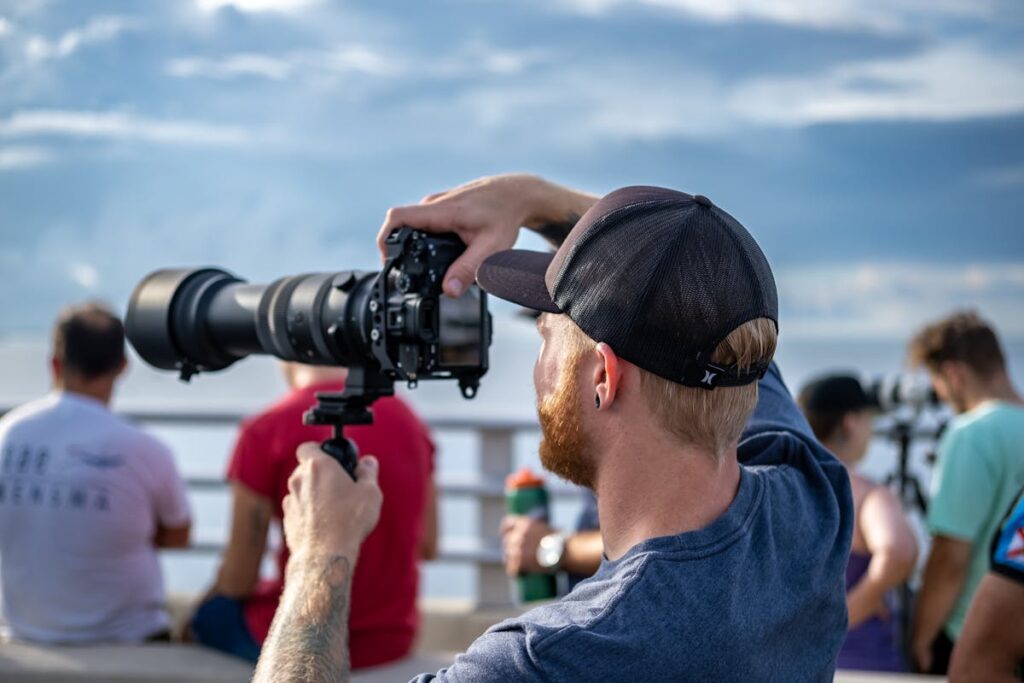
Depth of field (DOF) is one of the most essential concepts in photography, influencing how much of an image is in focus and how the viewer’s attention is directed within a composition. Whether you’re capturing sweeping landscapes, intimate portraits, or close-up macro shots, mastering depth of field allows you to control what is sharp and what is soft, creating images with the impact you desire.
In this article, we’ll explore the fundamentals of depth of field, the factors that influence it, and how you can use it creatively to enhance your photography.
- What Is Depth of Field?
Depth of field refers to the distance between the nearest and farthest objects in a photo that appear acceptably sharp. A photo with a shallow depth of field will have a very narrow range of focus, with the background and foreground appearing blurred. Conversely, a photo with a deep depth of field will have most of the scene in focus, from the foreground to the background.
Understanding how to control depth of field is crucial for directing the viewer’s attention to the most important elements of your photo. It can also add a sense of depth and dimension to your images, making them more visually compelling.
- Factors That Influence Depth of Field
Several factors influence depth of field, and by understanding these, you can better control the focus in your photos.
Aperture
Aperture is the most significant factor affecting depth of field. The aperture setting on your camera controls the size of the lens opening, which in turn determines how much light enters the camera. Aperture is measured in f-stops, such as f/1.8, f/4, or f/16.
- Wide Aperture (Low f-stop, e.g., f/1.8): Produces a shallow depth of field, with a narrow range of focus. This is ideal for isolating a subject against a blurred background, such as in portrait photography.
- Narrow Aperture (High f-stop, e.g., f/16): Produces a deep depth of field, with more of the scene in focus. This is commonly used in landscape photography, where you want everything from the foreground to the horizon to be sharp.
Distance to Subject
The closer you are to your subject, the shallower the depth of field will be. This is why macro photography, which involves shooting very close to small subjects, often has an extremely shallow depth of field. Conversely, increasing the distance between your camera and the subject will result in a deeper depth of field.
Focal Length
The focal length of your lens also affects depth of field. Longer focal lengths (telephoto lenses) naturally produce a shallower depth of field, even at the same aperture, while shorter focal lengths (wide-angle lenses) produce a deeper depth of field. This is why portrait photographers often use lenses with focal lengths between 85mm and 135mm to create beautifully blurred backgrounds.
Sensor Size
The size of your camera’s sensor also plays a role. Cameras with larger sensors, like full-frame DSLRs, will have a shallower depth of field compared to cameras with smaller sensors, such as crop-sensor DSLRs or smartphones, given the same aperture and composition.
- Creative Uses of Depth of Field
Depth of field isn’t just a technical aspect of photography; it’s a powerful creative tool. Here are some ways to use depth of field to enhance your images:
Isolating the Subject
A shallow depth of field is perfect for isolating your subject from the background, making it stand out. This technique is commonly used in portrait photography to keep the subject’s face in sharp focus while blurring the background, thus drawing attention to the person.
Creating a Sense of Scale
In landscape photography, a deep depth of field can be used to create a sense of scale and grandeur. By keeping both the foreground and background in focus, you can convey the vastness of the scene. This technique is also useful in architectural photography, where you want to show the full extent of a building or structure.
Directing the Viewer’s Eye
Depth of field can also be used to guide the viewer’s eye through the image. By keeping certain elements in focus while allowing others to blur, you can control the visual journey within the frame. For example, in a photo of a street, you might focus on a person walking while allowing the rest of the scene to blur, directing attention to the subject.
Creating Mood and Atmosphere
Shallow depth of field can create a dreamy, ethereal quality in your photos, especially when combined with soft, diffused lighting. This is often seen in wedding photography or romantic scenes, where the background is softly blurred to create a gentle, intimate atmosphere.
- Practical Tips for Controlling Depth of Field
Use Aperture Priority Mode
If you’re new to controlling depth of field, try using your camera’s Aperture Priority mode (often labeled as “A” or “Av”). This allows you to set the aperture while the camera automatically adjusts the shutter speed for correct exposure. It’s an excellent way to experiment with different f-stop settings and see how they affect depth of field.
Focus Carefully
When using a shallow depth of field, precise focusing is crucial. Ensure that your focus point is exactly where you want it, such as on the eyes in a portrait. Even a slight miss can result in an image that feels out of focus.
Consider Background and Foreground
Pay attention to what’s in the background and foreground of your shot. A cluttered or distracting background can detract from your subject, so using a shallow depth of field to blur it out can be beneficial. Conversely, if the background or foreground elements add to the story, a deeper depth of field might be the better choice.
Experiment with Lenses
Different lenses can produce different effects when it comes to depth of field. Experiment with both prime and zoom lenses to see how focal length influences your ability to control focus. A prime lens with a wide maximum aperture, like an f/1.8 or f/1.4, is particularly useful for creating a shallow depth of field.
Incorporate Depth of Field into a Photo Booth Experience
If you’re setting up a photo booth or buy a roaming photo booth for an event, understanding depth of field can help you control the focus on your subjects while creating a pleasing, blurred backdrop. By using a wide aperture, you can ensure that your guests are the stars of the photo, with the background providing just enough contexts without being distracting. This approach can add a professional touch to what might otherwise be a simple point-and-shoot setup, making the photo booth experience more memorable.
Conclusion
Depth of field is a fundamental aspect of photography that offers endless creative possibilities. By understanding how factors like aperture, distance, and focal length influence depth of field, you can take control of your photos and direct focus where it matters most. Whether you’re looking to isolate a subject, capture a landscape in all its detail, or create a mood, mastering depth of field will allow you to produce images that are not only technically sound but also artistically compelling.
So grab your camera, experiment with different settings, and discover how depth of field can transform your photography.




